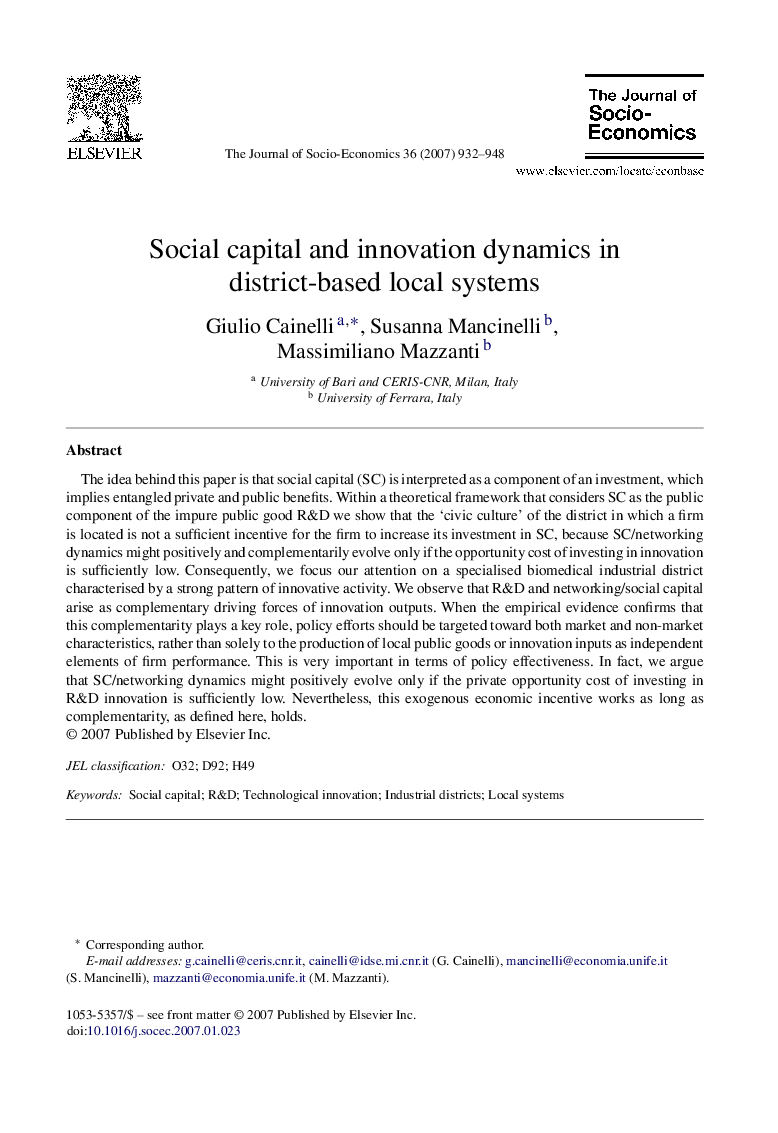| Article ID | Journal | Published Year | Pages | File Type |
|---|---|---|---|---|
| 971455 | The Journal of Socio-Economics | 2007 | 17 Pages |
The idea behind this paper is that social capital (SC) is interpreted as a component of an investment, which implies entangled private and public benefits. Within a theoretical framework that considers SC as the public component of the impure public good R&D we show that the ‘civic culture’ of the district in which a firm is located is not a sufficient incentive for the firm to increase its investment in SC, because SC/networking dynamics might positively and complementarily evolve only if the opportunity cost of investing in innovation is sufficiently low. Consequently, we focus our attention on a specialised biomedical industrial district characterised by a strong pattern of innovative activity. We observe that R&D and networking/social capital arise as complementary driving forces of innovation outputs. When the empirical evidence confirms that this complementarity plays a key role, policy efforts should be targeted toward both market and non-market characteristics, rather than solely to the production of local public goods or innovation inputs as independent elements of firm performance. This is very important in terms of policy effectiveness. In fact, we argue that SC/networking dynamics might positively evolve only if the private opportunity cost of investing in R&D innovation is sufficiently low. Nevertheless, this exogenous economic incentive works as long as complementarity, as defined here, holds.
